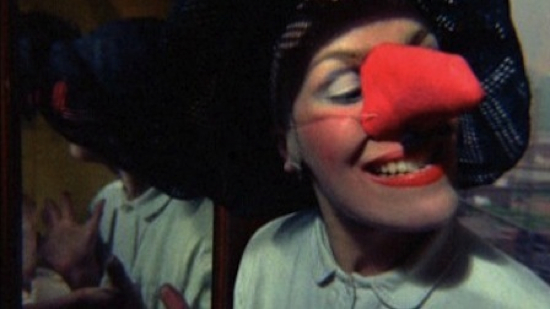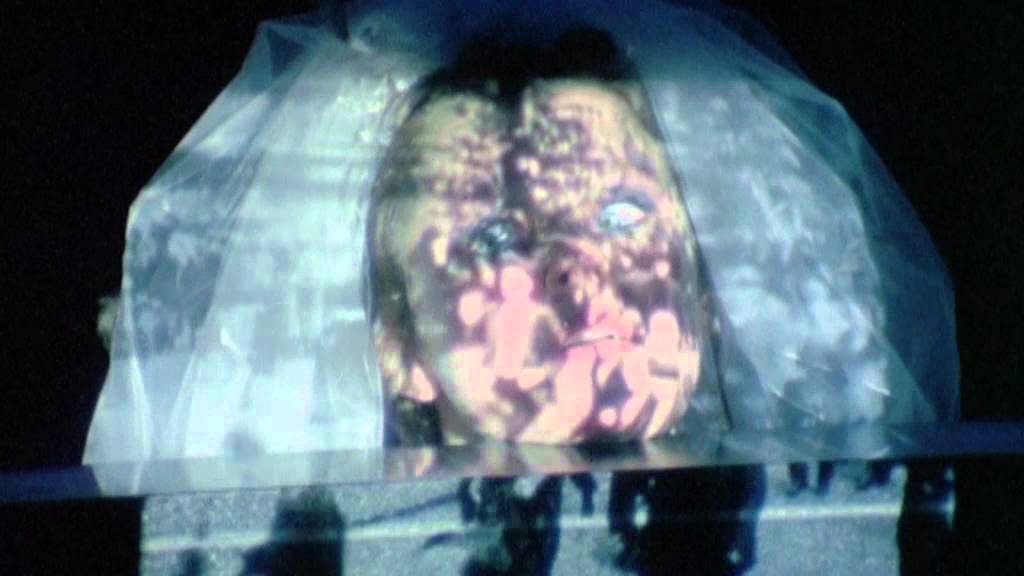Jane Arden’s contribution to cinema was a small but significant one. It started out almost imperceptibly low-key in the late 1940s with a couple of supporting turns in what are now firmly forgotten British B pictures. Around the same time she also appeared in a live television adaptation of Romeo And Juliet, though the BBC never thought to record this one for prosperity. A fitting move, perhaps, perfectly encapsulating this first stage in Arden’s career and how just fleeting it was. She disappeared from view for a few years, marrying the television director Philip Saville during this time, having the first of their two children together and relocating momentarily to the US. Upon returning she switched her attentions to writing, thus embarking on the second stage.
Arden wrote for both the stage and television, initially across a fairly broad spectrum. On the one hand there was Curtains For Harry, a Joan Sims-starring sitcom co-written with Richard Lester, the future director of A Hard Day’s Night. On the other there were the likes of The Thug, which screened as part of ITV’s Armchair Theatre strand, and The Party, which Charles Laughton directed when it was staged at the New Theatre on St Martin’s Lane. As the fifties moved into the sixties Arden also began to take on some prominent acting roles, including her husband’s adaptation of Jean-Paul Sartre’s No Exit alongside Harold Pinter and the lead in her own screenplay for the BBC’s experimental Six series, The Logic Game.
This period also saw Arden becoming an increasingly public figure. When Jack Bond was putting together his documentary on Salvador Dali for the arts slot New Release, it was Arden who was called upon to be the ever-so-slightly combative interviewer. She earned the role, in part, thanks to her appearances on television discussion panels, holding forth on gender politics, Women’s Lib and the like, subject matter which also gelled perfectly with The Logic Game. The play centred on a seemingly contented middle-class marriage set-up, only to reveal the isolation within. It’s an idea that would return for her first feature as screenwriter, 1967’s Separation, which Bond also directed. Here the loss of a child and subsequent marital breakdown take their toll on a woman in her thirties – once again played by Arden herself – and particularly her mental state.
The theatre work, meanwhile, was growing increasingly radical. Vagina Rex And The Gas Oven, the title of her 1969 production, tells its own story and was swiftly followed by the setting up of Holocaust, an all-female troupe. Their first show, A New Communion For Freaks, Prophets And Witches, would soon bleed into Arden’s second feature, The Other Side Of The Underneath (1972). Bond’s role would be restricted to producer on this particular effort, though he and Arden would serve as co-directors on her final two films. Vibration, a 30-minute short from 1975, saw her interest in liberation extend into Sufism, while the feature-length Anti-Clock (1979) starred her son Sebastian and flirted with commercialism – it’s almost a thriller, it’s almost science fiction – only to remain as deterministically experimental as their previous work. The collaboration ended when Arden committed suicide on the 20th of December 1982, aged 55.
In the aftermath Bond effectively suppressed the films they had made together. You couldn’t buy them on VHS or DVD and offers to have them screened at festivals or for retrospectives were all firmly refused. He continued to make films albeit in the safer environs of The South Bank Show (where his subjects ranged from Werner Herzog to Catherine Cookson) and the oddball Pet Shop Boys’ movie, It Couldn’t Happen Here. A sole exception came in 2007 when the Tate Gallery was hosting a major Dali exhibition. The BBC documentary was brought back into the spotlight and would later play at MoMA in New York, as well as earning itself a Stateside DVD release. Otherwise the only means of seeing Arden onscreen came in the form of occasional repeats of the Sartre adaptation on the BBC, though no doubt it was Pinter’s presence rather than hers which proved the deciding factor.
Bond’s protectiveness is understandable. The autobiographical undercurrents which run through the features make for some incredibly raw pieces of cinema. It’s easy to understand how seeing his former lover and collaborator in such an emotionally open state would prove difficult. Furthermore Bond’s decision not to make these films available for so long is also a valid one. While he may have felt that he was protecting Arden – and perhaps his memories of her too – they belong to him just as much. Her presence as the sole screenwriter on each all three of the feature-length works, not to mention the lead role in Separation and a significant part in The Other Side Of The Underneath, position her as the key creative force, yet Bond’s role as director and producer is just as important. If Arden created, then Bond shaped.
Nowhere is this more apparent than in Separation. By no means a conventional work, the film takes its cue from its central character’s fractured mental state. We jump back and forth, through time and through moods, incrementally charting her decline. At all times Bond keeps a handle on things, effortlessly transitioning from sequence to sequence and their shifts in tone and technique. On the surface there is much about Separation that seems quintessentially of its time: stylish monochrome photography offset by psychedelic liquid colour inserts; fashions provided by, among others, Granny Takes a Trip; and a soundtrack provided by Procol Harum. Yet it is all just surface, a façade of normalcy much like the one that Arden’s onscreen surrogate carries around with her. Slowly we discover the confusion within and the tiny slips – a perfect synthesis of style and content. Discordant perhaps, but entirely harmonious.
Bond took a step back when it came to The Other Side Of The Underneath, serving only as producer and relinquishing the directorial reins to Arden. Once again it’s a shrewd move as a film this personal and this angry arguably deserves to have just that singular voice behind it. The end results are undoubtedly messy and make for uncomfortable viewing, but that’s the way that cinema this personal and this angry should be. Born out of the Holocaust theatre group this is filmmaking as therapy. Arden and her actresses decamped to Wales and lived together in the house where much of the action unfolds. Dressed in Victorian garb they are placed as the inmates of an asylum, except their various games and sessions are captured as vérité and fall uneasily between fact and fiction. Stylistically this is a far rougher film that Separation – even if the Welsh countryside cannot help but look lovely – though just as keyed in to the mindset of its schizophrenic central character. For raw power alone, few sequences in cinema can top the so-called ‘Gypsy Party’ section, which blurs the divide between reality and performance even further. Arden invited an assortment of society’s outcasts – including local hard men and mentally handicapped children – to interact with her troupe, only to find the situation overspill into lust, tears and violence. To top the scene off she asked Bond to make love, on camera, with one of her co-stars.
When it came to her own son Arden wasn’t quite so demanding. Sebastian Saville, her first son with Philip, takes the central role in Anti-Clock, the family connection once again forcing autobiographical considerations. He plays Joseph Sapha, a young man willingly undergoing voluntary surveillance as a means of self-discovery, "a mental snapshot of myself." Bond and Arden had experimented with video effects in their short film Vibration a few years earlier, but here they come to the fore. Monitors are ever-present, the screen is often sliced into multiple divisions and images are regularly manipulated. The science fiction elements hinted at by Separation when at its coldest and least freewheeling (albeit of the arthouse variety typified by Godard’s Alphaville or Fassbinder’s World On A Wire) also come into prominence. The tone is reminiscent of early Cronenberg (particularly the black and white miniatures of Stereo and Crimes Of The Future) and JG Ballard: bleak, clinical, of its time and out of time. The seventies are there in the background, but they barely impinge on proceedings.
Anti-Clock was informed, in part, by Arden’s 1978 poetry collection You Don’t Know What You Want, Do You?. It also borrowed one of the standout scenes from Vagina Rex And The Gas Oven, first staged a decade a earlier, suggesting a strong sense of continuity in her work. Of course it mutates and readjusts its focus as the years go by, but the dense web of interconnections is hard to deny. Indeed, since the British Film Institute simultaneously issued all three of the Bond and Arden features onto DVD and Blu-ray in 2009 (with Vibration among the additions) it’s been impossible not to address them as a single body of work. They may vary slightly in execution – and, at times, in quality – yet they are all clearly the product of a highly distinctive, utterly singular voice and deserve to be more widely known. If you’re in need of challenging cinema quite unlike anything else you’ve seen then look no further.
Dual Format Editions of Separation, The Other Side Of The Underneath and Anti-Clock are out now via the BFI.



